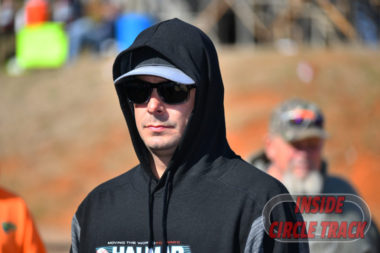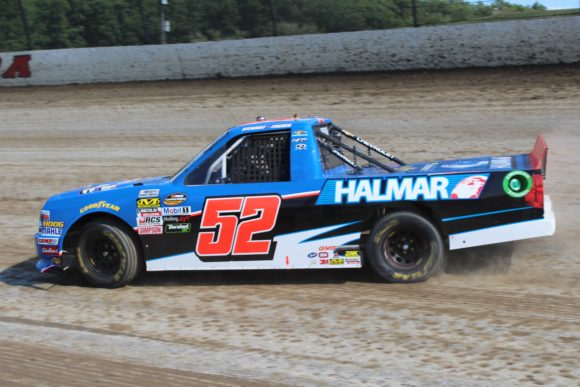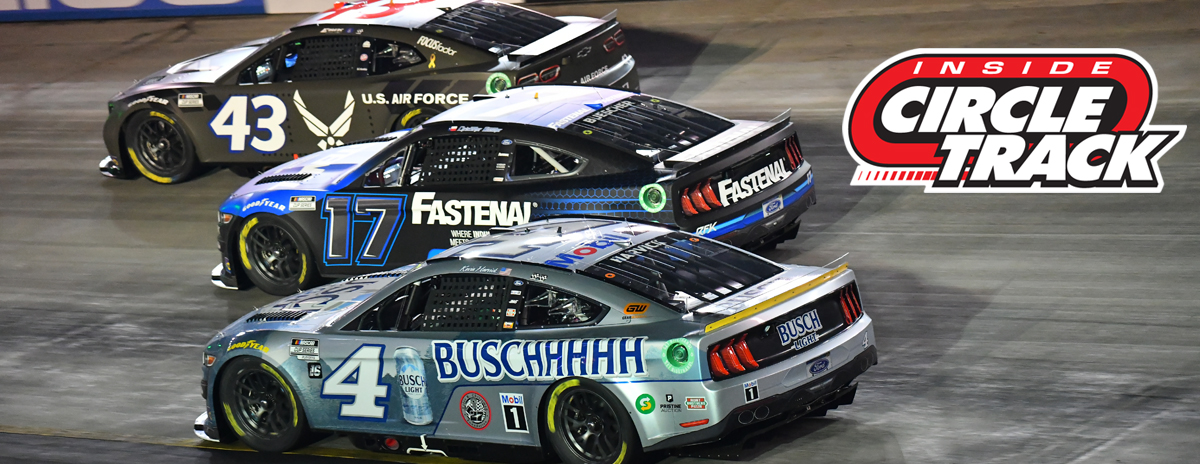
Stewart Friesen
With the 2021 NASCAR Cup Series campaign winding down and the first season with the NextGen car fast approaching, the testing of that new machine has ramped up. Well documented practice sessions on the Charlotte Roval and the quarter-mile paved oval of Bowman-Gray Stadium have recently taken place. But those are not the only types of tracks the NASCAR’s top division will compete on in 2022.
As was the case in 2021, there will be one race for the sport’s premier series on a dirt surface. Once more, the Bristol Motor Speedway will be covered in clay for its spring race. And since the new car will be used on the east Tennessee track, it needs to first be tested to ascertain its worthiness for racing on dirt.
For the site of that test, NASCAR has chosen the Wythe Raceway located in Rural Retreat, Virginia. The high-banked half-mile track is similar enough to BMS to provide a realistic feel for what the new car will go through next April.
But the car and the track are only two-thirds of the equation for the session. A driver with experience on dirt surfaces will be needed to provide the best possible feedback. For that purpose, the sanctioning body has chosen one of the best dirt racers available and it happens to be someone who also has NASCAR experience.
Stewart Friesen is a regular on the NASCAR Camping World Truck Series who has scored two victories on that tour with one of those coming on dirt at Ohio’s Eldora Speedway in 2019. The 38-year-old driver has won more than 300 feature races on dirt in Modified and Sprint Car competition so few competitors in racing today have the credentials as a dirt racer with NASCAR experience as does the Niagara-on-the-Lake, Ontario native.
“That’s going to be interesting,” Friesen replied when asked of the upcoming NextGen test during a recent NASCAR Media availability. “It caught me by surprise when NASCAR called and let me know that they were looking at me to run that test. It’s something that’s really cool and something I’m proud to do and try to help out with. For them to ask me to do it was something that was really awesome and I’m going to try my best to help in all aspects.”
Friesen has as much time on dirt in a Cup car as any other NASCAR driver after having entered and finished last year’s Food City Dirt Race at Bristol, which was the first race for the top division on clay since 1970. And as a regular on the NCWTS since 2016, he has entered numerous dirt races in big, heavy stock-bodied machines. He has as much understanding of the cars and how they behave on dirt as anyone.
“It’s primarily a tire test so I believe they’ll have a bunch of different compounds and we’ll run through some stuff,” Friesen explained. “The engineers will look at temps and wear. Wytheville, that surface is a red clay surface similar to what goes on Bristol, so I believe the abrasiveness of the clay should be similar. I think it will be a pretty good test to see how the tires hold up.”
His experience has already led the NASCAR Camping World Truck Series championship contender to offer one piece of advice.
“I made one suggestion after Bristol and Knoxville because I think the cars and trucks would race better on a harder tire similar to what we used at Eldora,” he said. “We’ll see what happens. We’ll see what they bring and we’ll try to go out there and run some laps and have some fun with it, obviously. It’s going to be a pretty cool experience for me. Hopefully I’ll give as much feedback as I can to NASCAR and Goodyear so ultimately we can have the best races at Bristol.”

Stewart Friesen won a NCWTS race on the clay surface of Eldora Speedway in 2019
So why harder tires?
“It would be less demanding on the race track,” the driver pointed out. “A harder tire tends to polish up a dirt track so it gets more of a bead on the wall at the top and search for the moisture on the bottom rather than just lay rubber and lock down to single-file on the bottom which is kind of where Bristol went after so many laps. After we pitted to get tires, we could race for ten or fifteen laps then at the end of the segments it kind of just locked down on the bottom.”
Friesen believes the harder tire will make for a track with more racing grooves.
“I think a harder tire will keep the track a little more polished up and let fans see a dirt race that they like to see with cars beating the right rear off on the fence and guys catfishing on the bottom searching for that moisture just to widen the track out and not be so demanding on the track and not breaking it apart and making the holes and the dust that we saw.”
The dirt racing veteran who has primarily demonstrated his talents in the northeastern portion of the country has, over the past couple of years, raced more frequently in the south and on the type of dirt that will be used to cover Bristol’s concrete. He has never driven at Wythe Raceway but has enough experience on similar tracks in Tennessee and South Carolina from which to draw comparisons.
“I haven’t,” the current resident of Sprakers, New York answered when asked if he had raced before at the southwestern Virginia facility. “I ran a bunch of stuff in North Carolina and South Carolina in the past year since we started the Dirt Late Model thing and did that a little bit. Our Modifieds have been down there(in the South) more since Covid. I haven’t actually been to Wytheville but I’ve seen a lot of video from there. It’s similar to a Smoky Mountain type track and similar clay to Cherokee and what goes on Bristol. I’m looking forward to it.”
Richard Allen is a member of the National Motorsports Press Association
Respond to this piece on Twitter –> @RichardAllenIDR
or on Facebook –> InsideCircleTrack/Facebook
